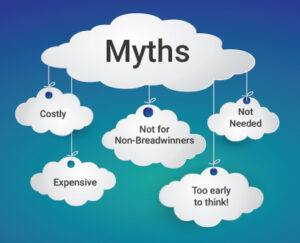How Car Insurance Rates Vary Across the United States
Car insurance is a necessary expense for vehicle owners across the United States, and in most states, it is a legal requirement to ensure drivers and passengers are protected in the event of an accident. However, insurance premiums are not consistent nationwide and can vary significantly due to several factors, including location, driving history, type of vehicle, and even credit scores. Understanding these differences can help consumers make better decisions and potentially reduce their premiums.
This article will explore the key factors influencing car insurance premiums in different U.S. states, highlighting both high and low-cost areas, and offer tips on how to lower your rates. We will also incorporate important financial keywords related to car insurance, loans, and budgeting.
What Affects Auto Insurance Premiums?
Auto insurance premiums are the amounts policyholders pay to keep their insurance coverage active. These premiums are based on the likelihood that an insurer will have to pay out a claim, with factors like driving history, vehicle type, and location playing a crucial role in determining the cost.
Geographic Differences in Car Insurance Premiums
Where you live is one of the most significant factors affecting your car insurance rates. States with higher accident rates, thefts, and crime tend to have higher premiums. Population density and the frequency of natural disasters also play a part.
Some states are known for having high auto insurance premiums due to factors like accidents, theft, and fraud. These include:
- Michigan: With an average premium of $2,551 annually, Michigan leads the nation in car insurance costs. This is due to its no-fault insurance law, which requires unlimited personal injury protection, making premiums considerably higher.
- Louisiana: High uninsured motorist rates, frequent severe weather events like hurricanes and floods, and high litigation rates lead to some of the highest premiums in the country.
- Florida: Florida’s reputation for insurance fraud, combined with high population density and a large retiree population, results in higher accident rates and increased premiums.
Low-Cost States for Auto Insurance
Conversely, some states have lower premiums due to factors like fewer accidents, lower theft rates, and more favorable weather conditions. These states include:
- Maine: With its low population density, fewer cars on the road, and a low rate of uninsured drivers, Maine offers some of the lowest auto insurance premiums in the country.
- Vermont: Like Maine, Vermont benefits from being a rural state with minimal crime and mild weather, which helps keep insurance premiums low.
- Ohio: Ohio’s competitive insurance market and relatively low accident rates contribute to more affordable premiums. The state also has fewer car thefts than the national average.
Factors That Affect Car Insurance Rates
While location is important, several personal factors also influence your auto insurance premiums:
- Driving History: Drivers with a clean driving record (no accidents, traffic violations, or claims) typically pay lower premiums. In contrast, those with a history of accidents or violations are considered higher risk and face significantly higher premiums.
- Vehicle Type: The make and model of your vehicle can impact your insurance costs. Expensive cars, sports cars, and luxury vehicles are more costly to insure because they are more expensive to repair or replace. Cars with good safety ratings and anti-theft features tend to have lower premiums.
- Age and Gender: Younger drivers, especially teens, generally face higher premiums because they are statistically more likely to be involved in accidents. Gender also plays a role, with young male drivers often paying more than females due to riskier driving behavior.
- Credit Score: In many states, insurers use your credit score to determine your premiums, as studies show a link between poor credit and a higher likelihood of filing claims. Those with good credit scores tend to pay lower premiums.
State Regulations and Car Insurance Rates
State regulations significantly impact auto insurance premiums. Laws regarding minimum coverage requirements and whether a state operates under a “fault” or “no-fault” system can affect how much drivers pay for insurance.
- Minimum Coverage Requirements: States with higher minimum coverage requirements tend to have higher premiums. For example, New Jersey and New York have high minimum coverage, resulting in higher premiums, while states like Iowa and South Dakota, with lower minimum requirements, see lower premiums.
- Fault vs. No-Fault States: In a “fault” state, the at-fault driver is responsible for paying for damages, and their liability insurance covers the costs. In contrast, in “no-fault” states, each driver’s own insurance covers their medical costs, regardless of who caused the accident. No-fault states, such as Florida and Michigan, often have higher premiums because of the additional personal injury protection coverage required.
How to Lower Your Car Insurance Rates
Given the variation in premiums across the U.S., it’s important to know how to reduce your insurance costs. Here are some strategies that may help lower your premiums:
- Shop Around: Premiums can vary widely between insurers for the same coverage. By comparing quotes from multiple providers, you may find a better deal and save hundreds of dollars.
- Increase Your Deductible: Raising your deductible can lower your monthly premium since you’ll be responsible for paying a higher amount out-of-pocket in the event of a claim. However, make sure you can afford the higher deductible if an accident occurs.
- Bundle Policies: Many insurers offer discounts for bundling auto insurance with other types of coverage, such as homeowners insurance. Combining policies can result in significant savings.
- Maintain a Clean Driving Record: Avoiding accidents, traffic violations, and claims can help you qualify for safe driver discounts and keep your premiums lower.
- Improve Your Credit Score: If your insurer uses your credit score to determine rates, improving your credit can help lower your premiums. Pay bills on time, reduce debt, and regularly check your credit report for errors.
Conclusion
Auto insurance premiums can vary greatly from state to state and are influenced by a combination of factors, including geographic location, driving history, vehicle type, age, gender, and credit score. State regulations regarding minimum coverage and whether a state is fault or no-fault also play a role.
By understanding these factors and taking proactive steps such as shopping around, raising deductibles, and improving your credit score, you can manage your auto insurance costs effectively. With a little research and effort, you can find affordable car insurance that meets your needs.
For more information visit the following sites:




